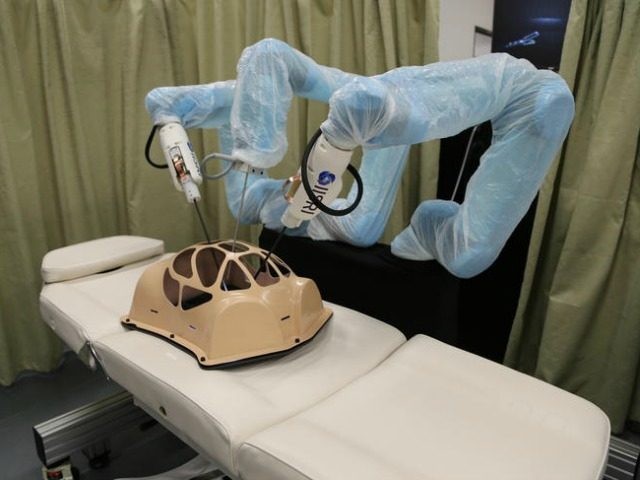Thanks to a breakthrough in robotic technology, surgeons performing delicate operations via computer will now have the sense of touch.
Currently utilized robot surgeons — recently shown to be as effective as their human counterparts — resulted in patients with shorter hospital stays, less blood lost during surgery, and better short-term recovery from the procedure. To date, surgeons using laparoscopic systems have been restricted to use only sight while remotely operating. Together, Deakin University of Melbourne and Harvard University have developed HeroSurg, the first surgical robot to give operators a remote sense of touch using haptic technology.
The team also had assistance from acclaimed Australian surgeon and Royal Adelaide Hospital’s Professor Suren Krishnan, as well as lead researcher Dr. Mohsen Moradi Dalvand.
Dalvand has nearly a decade of experience in medical robotics and haptic technology, which provides physical feedback to users to simulate a sense of touch (the rumble feature of video game controllers, for example). He defined the robot as a “master and slave” system: “On the ‘slave’ side, it has multiple robotic arms with instruments and laparoscope. On the ‘master’ side, we have haptic-enabled handles for the surgeons to operate the instruments.”
“If the surgeon is grasping something using the instruments, or if they’re cutting the tissue, they can feel the amount of force they are applying to the tissue,” said the researcher. “When you have the ability to measure or feel the interaction forces … you can touch the instruments and feel how stiff [the tissues] are, how soft they are, to what extent the tissues are normal or abnormal.”
In a statement, Krishnan explained the magnitude of the sense of touch during laparoscopic procedures. “The major drawback of the current system is the lack of tactile feedback,” he noted. “Tactile feedback allows a surgeon to differentiate between tissues and to ‘feel’ delicate tissues weakened by infection or inflammation and dissect them more carefully. Tactile feedback will allow us to use finer and more delicate sutures in microsurgery.”
In addition to fine-tuning robotic microsurgery, Dalvand believes HeroSurg will “overcome many of the limitations of existing robotic laparoscopic systems,” and that the robot’s unique features, including automatic collision avoidance, high-res 3D imagery, and further range of motion, “will assist surgeons to perform demanding surgical procedures with comfort, accuracy, and safety by providing real-time collision avoidance for medical instruments, and stereo-endoscopic vision.”
Following laboratory testing by medical experts, the team is moving the system forward to human trials, with hopes of introducing the device into Australia’s public health system within a few years. Dalvand even sees the potential for HeroSurg to be used remotely, allowing surgeons and patients to be thousands of miles apart — in hospitals, prisons, or war zones.

COMMENTS
Please let us know if you're having issues with commenting.